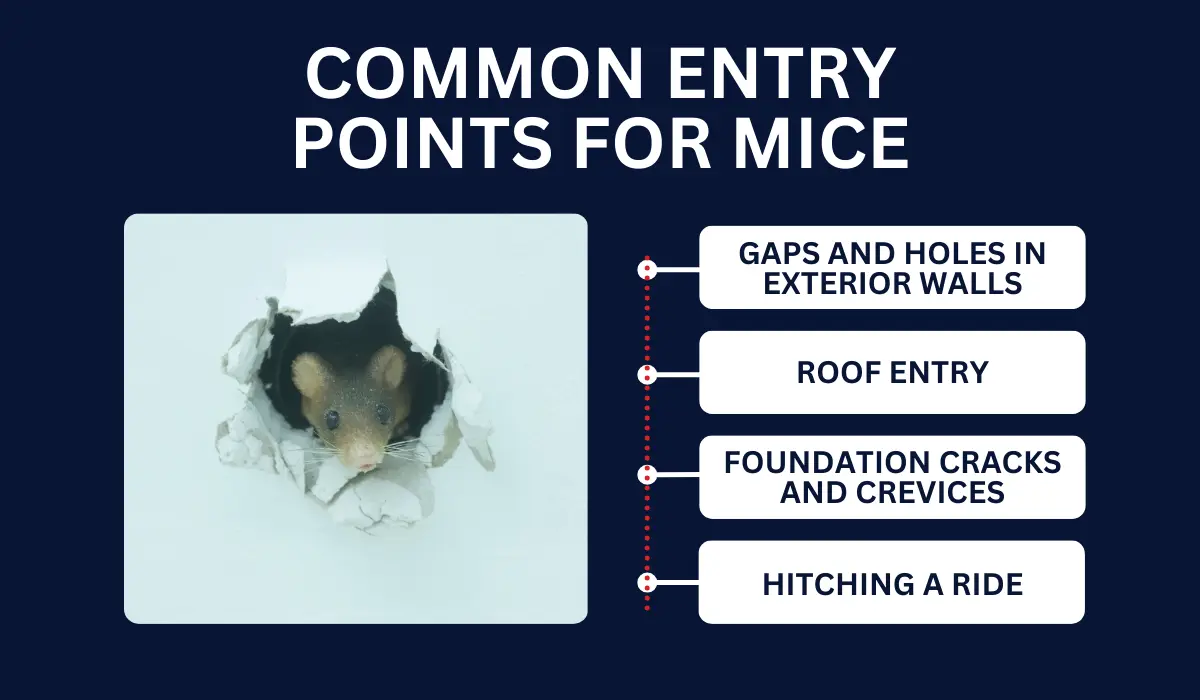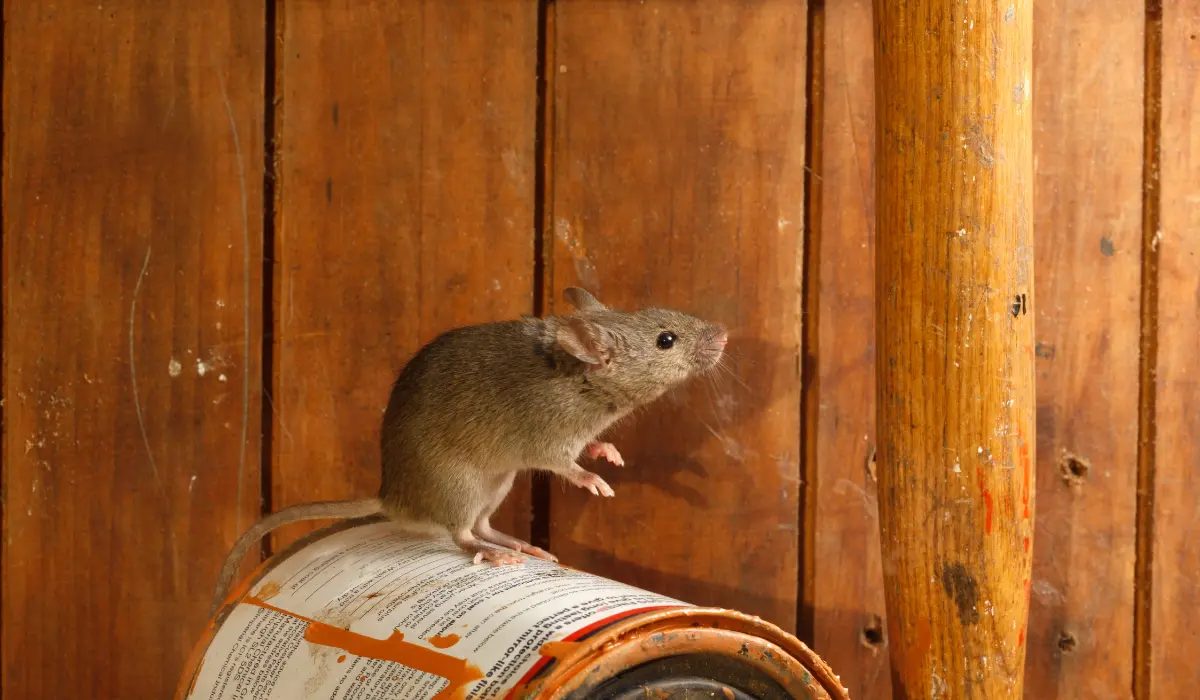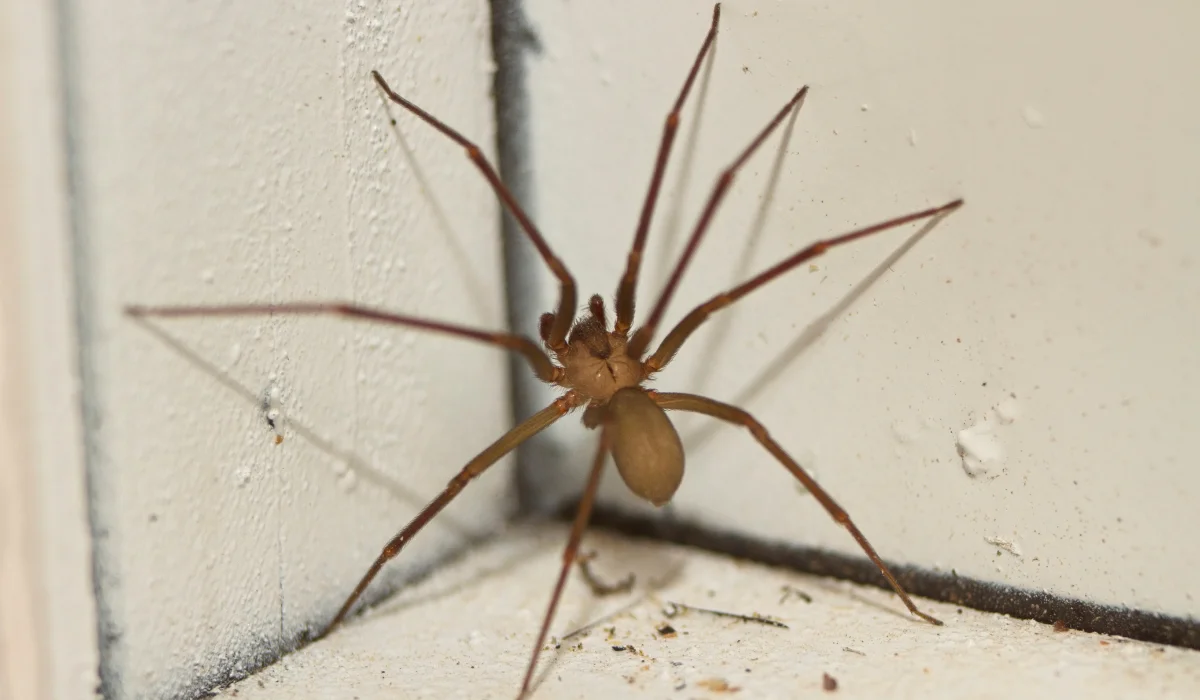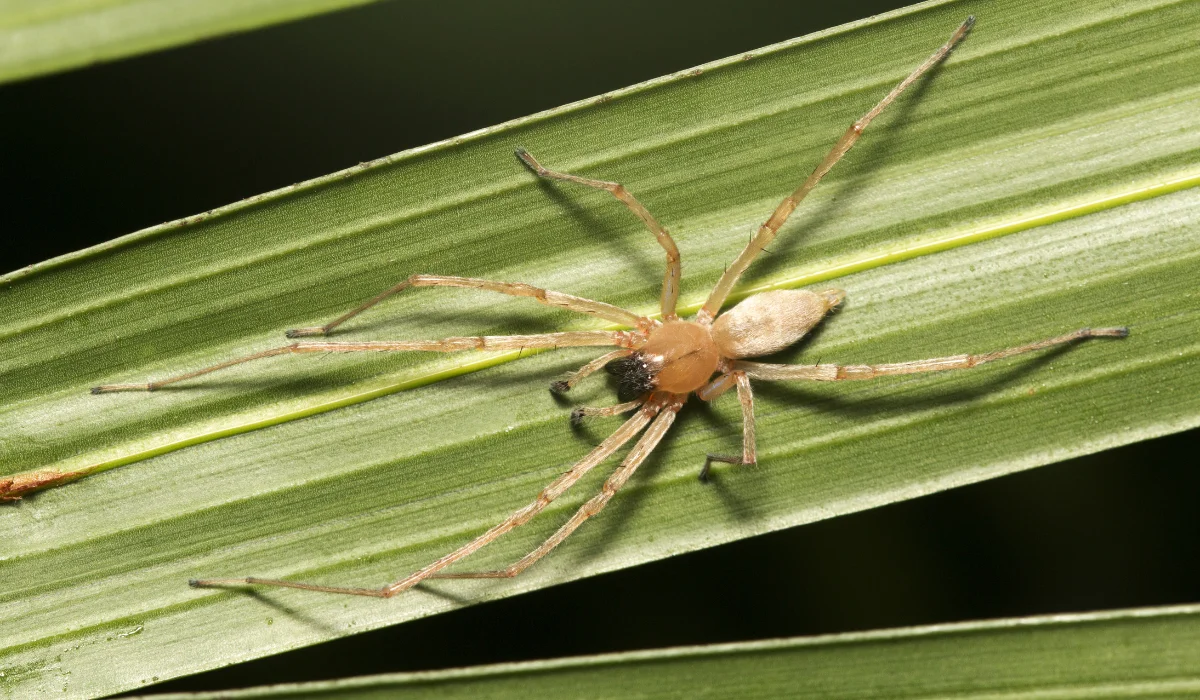In New Orleans, many homeowners find themselves sharing their space with unwelcome guests—mice. These tiny invaders can sneak into houses through the smallest gaps and cracks around doors, windows, and foundations.
Are you wondering how to protect your home from these elusive pests? Keep reading to discover practical tips and solutions that will help you keep mice at bay.
Key Takeaways
- Mice can enter New Orleans homes through gaps in exterior walls, roof and soffit areas, foundation cracks, and hitching rides on items brought indoors.
- Mice are attracted to homes that offer easy access to food and water, making kitchens and garbage areas particularly vulnerable.
- Indicators of a mouse infestation include visible droppings, audible scratching sounds, and apparent damage to food packaging.
- Preventing future infestations involves sealing entry points, managing food sources, using traps, and professional help recommended for severe cases.
COMMON ENTRY POINTS FOR MICE

Gaps and Holes in Exterior Walls
Mice can enter homes through small gaps and holes in exterior walls. Any space larger than a quarter-inch can serve as an entry point. Imagine a standard pencil can fit through that hole.
These gaps may develop around electrical wiring, plumbing, or vents, especially in older homes. Poorly sealed AC entry points can also provide an easy passage for these critters.
Roof Entry
The roof is a common entry point for mice and larger rodents like roof rats. They can climb trees or power lines to reach rooftops. They can also chew through shingles, gutters, vents, and other vulnerabilities along the roof line.
Foundation Cracks and Crevices
Cracks and crevices in the foundation are prime entry points for mice. Over time, foundations can develop small openings that they can squeeze through.
This is particularly common in homes where the wood has rotted or in raised homes with crawl spaces.
Hitching a Ride
Mice can also get inside by hitching rides on objects brought into the home. Items stored in garages or outdoor sheds, such as firewood, boxes, or seasonal decorations, can harbor mice.
Once inside, these small rodents can easily move into the living areas of the house. To reduce this risk, keep garage doors closed as much as possible.
WHY MICE ARE ATTRACTED TO YOUR HOME?
Mice often invade homes for two primary reasons: easy access to food and consistent water sources.
Availability of Food
Mice search for easy-to-access food sources. Kitchens with uncovered pet food, crumbs under appliances or in pantries, and unsealed packages are prime targets. Garbage cans without tight lids also attract mice, offering them a buffet of leftovers.
Beyond the kitchen, any cluttered area with food remnants invites house mouse activity. Cockroaches and fleas, attracted by similar food sources, might also be found where mice live.
Water Sources
Leaky faucets and pipes provide a readily available source of water for them. Even minimal moisture from condensation or spills in bathrooms and kitchens can be enough to sustain them.
HOW TO KNOW IF YOU HAVE A MICE INFESTATION
If you’re wondering whether mice are invading your space, watch for these signs:
- Mouse Droppings: Look for small, dark, seed-like feces in cupboards, drawers, or along baseboards.
- Scratching and Scurrying Sounds: Pay attention to any squeaking noises in the walls or under the floors, especially at night.
- Nests: Check for nests made from shredded materials like clothing, paper, or cardboard in hidden spots like closets, cabinets, and under furniture.
- Run Marks: Look for greasy trails on walls, furniture, or countertops that indicate repeated paths taken by mice.
- Pet Behavior: Watch for unusual behavior from pets, like barking at empty spaces or pawing under appliances.
- Live Sightings: While less common due to their nocturnal nature, seeing a mouse scurrying around during the day is a clear sign of an infestation.
HOW TO PREVENT FUTURE MICE INFESTATIONS
As homeowners, you can work to make your homes rodent-proof and reduce the risk of diseases like hantavirus.
Here’s what you can do to prevent further infestations:
- Seal Entry Points: Inspect the home’s exterior and find any gaps where mice might enter. Use steel wool and caulking to block these spots.
- Eliminate Food Sources: Store food in sturdy containers and quickly clean up spills. Avoid leaving pet food out overnight.
- Remove Nesting Materials: Store fabrics and blankets in heavy-duty containers instead of cardboard or flimsy plastic bags.
- Set Mouse Traps: Use mouse traps to capture or kill mice. Snap traps are effective but can result in disposing of dead mice.
- Maintain a Clean Home: Clean your floors and counters regularly, vacuuming at least once a week to prevent crumbs from accumulating.
- Check for Signs of Rodent Infestation: Regularly check for droppings, gnaw marks, and other signs of mouse problems or pests like roaches and fleas.
IS IT TIME TO CALL A PROFESSIONAL?
Sometimes, it’s best to leave mouse removal to the experts. If you repeatedly see mice or droppings, it’s a sign of an established infestation that needs pest control professionals’ intervention.
Whether you’re in Baton Rouge or the New Orleans area, seeking expert help should be easy. For immediate intervention for a severe infestation, let Lajaunie’s mice control specialists tailor a solution that’s right for your home.
For more information about the areas we service, visit our location page.
 By: LaJaunie's Pest Control
By: LaJaunie's Pest Control 


